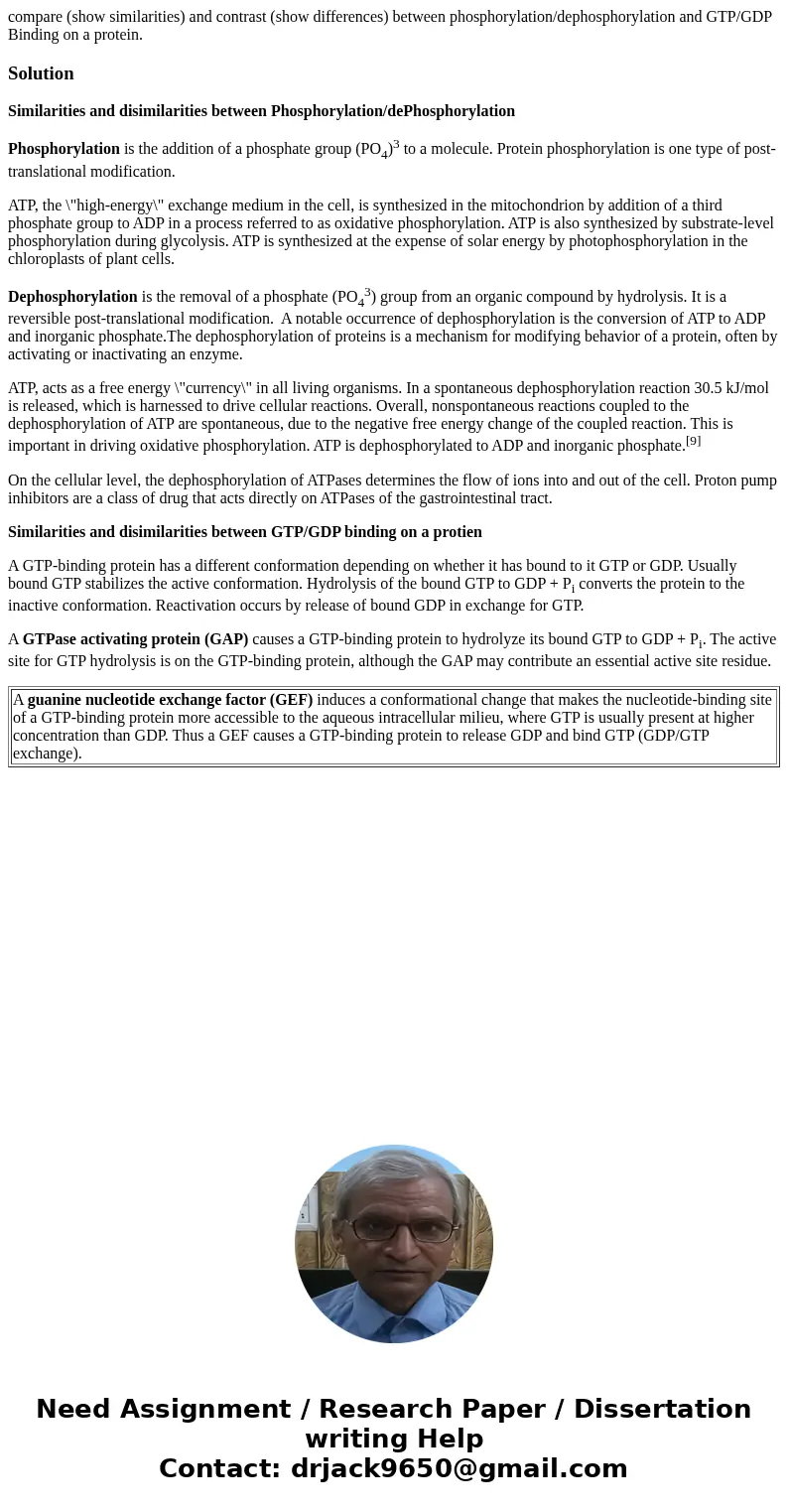compare show similarities and contrast show differences betw
compare (show similarities) and contrast (show differences) between phosphorylation/dephosphorylation and GTP/GDP Binding on a protein.
Solution
Similarities and disimilarities between Phosphorylation/dePhosphorylation
Phosphorylation is the addition of a phosphate group (PO4)3 to a molecule. Protein phosphorylation is one type of post-translational modification.
ATP, the \"high-energy\" exchange medium in the cell, is synthesized in the mitochondrion by addition of a third phosphate group to ADP in a process referred to as oxidative phosphorylation. ATP is also synthesized by substrate-level phosphorylation during glycolysis. ATP is synthesized at the expense of solar energy by photophosphorylation in the chloroplasts of plant cells.
Dephosphorylation is the removal of a phosphate (PO43) group from an organic compound by hydrolysis. It is a reversible post-translational modification. A notable occurrence of dephosphorylation is the conversion of ATP to ADP and inorganic phosphate.The dephosphorylation of proteins is a mechanism for modifying behavior of a protein, often by activating or inactivating an enzyme.
ATP, acts as a free energy \"currency\" in all living organisms. In a spontaneous dephosphorylation reaction 30.5 kJ/mol is released, which is harnessed to drive cellular reactions. Overall, nonspontaneous reactions coupled to the dephosphorylation of ATP are spontaneous, due to the negative free energy change of the coupled reaction. This is important in driving oxidative phosphorylation. ATP is dephosphorylated to ADP and inorganic phosphate.[9]
On the cellular level, the dephosphorylation of ATPases determines the flow of ions into and out of the cell. Proton pump inhibitors are a class of drug that acts directly on ATPases of the gastrointestinal tract.
Similarities and disimilarities between GTP/GDP binding on a protien
A GTP-binding protein has a different conformation depending on whether it has bound to it GTP or GDP. Usually bound GTP stabilizes the active conformation. Hydrolysis of the bound GTP to GDP + Pi converts the protein to the inactive conformation. Reactivation occurs by release of bound GDP in exchange for GTP.
A GTPase activating protein (GAP) causes a GTP-binding protein to hydrolyze its bound GTP to GDP + Pi. The active site for GTP hydrolysis is on the GTP-binding protein, although the GAP may contribute an essential active site residue.
| A guanine nucleotide exchange factor (GEF) induces a conformational change that makes the nucleotide-binding site of a GTP-binding protein more accessible to the aqueous intracellular milieu, where GTP is usually present at higher concentration than GDP. Thus a GEF causes a GTP-binding protein to release GDP and bind GTP (GDP/GTP exchange). |

 Homework Sourse
Homework Sourse